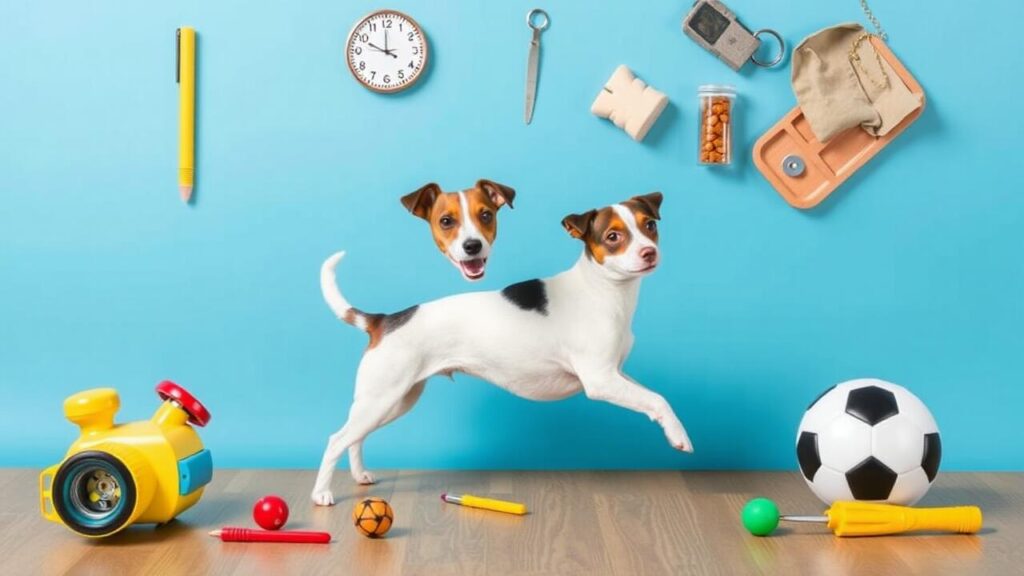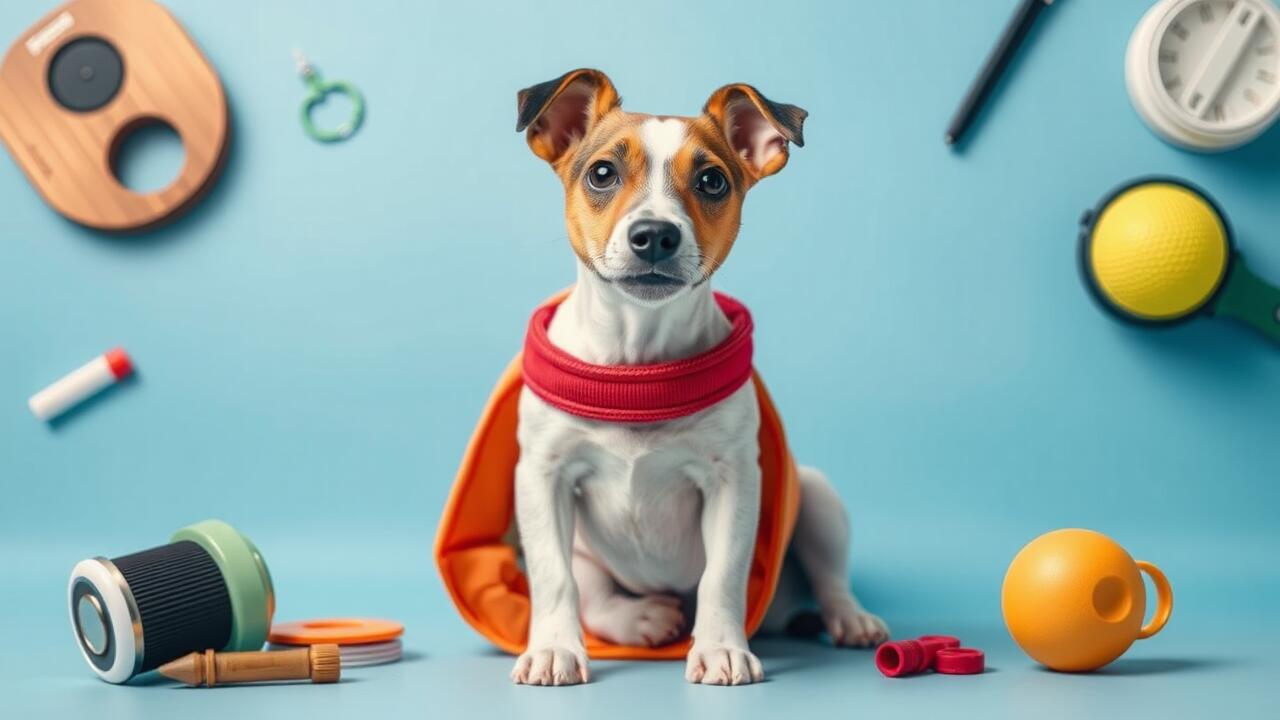Table Of Contents
How to House Train a Jack Russell Terrier Effectively and Easily
How To House Train A Jack Russell Terrier | Understanding the Jack Russell Terrier’s Behavior
Understanding the behavior of Jack Russell Terriers is crucial when considering how to house train a Jack Russell Terrier effectively. These energetic and intelligent dogs are known for their strong instincts and playful nature. Jack Russell terriers can sometimes be challenging to train due to their stubbornness and high energy levels, making it essential to employ strategies that cater to their unique temperament. By recognizing their need for structure and mental stimulation, owners can create a supportive environment that promotes successful house training. Mastery of house training a Jack Russell terrier involves patience, consistency, and an understanding of their behavior, ensuring a positive experience for both the dog and the owner.
How to House Train a Jack Russell Terrier | Key Characteristics of Jack Russell Terriers
Jack Russell Terriers, like other terriers and rat terriers, are known for their intelligence and energetic nature. Understanding these key characteristics is essential when considering how to house train a Jack Russell Terrier. Their natural curiosity and strong hunting instincts can make puppy training a rewarding yet challenging experience. A skilled dog trainer recognizes the unique traits of this breed, which often include stubbornness and a desire to explore their environment.
House training a Jack Russell Terrier requires patience and a tailored approach that considers their personality. These dogs thrive on routine and need clear guidance to succeed. Implementing consistent training methods while leveraging their playful disposition can significantly enhance the training process. Those looking to master how to house train a Jack Russell Terrier should remain committed to understanding their dog’s needs and behaviors.
Importance of Consistency in Training
Consistency is vital in teaching your puppy the proper behaviors expected of them. Establishing a routine helps your Jack Russell understand what is expected during the house training process. By using the same commands, rewards, and methods, you create a familiar environment for your dog. This familiarity makes it easier for them to grasp the concept of where and when to relieve themselves. Knowing how to house train a Jack Russell Terrier greatly depends on maintaining this predictability.
Following a consistent schedule for feeding and bathroom breaks reinforces good habits. Taking your Jack Russell outside on a leash at the same times each day helps them learn the right cues for bathroom behavior. Dogs thrive on routine, and any deviation can lead to confusion. Understanding how to house train a Jack Russell Terrier will involve patience and steadfastness, making consistency a key component of your training strategy.
- Regularly schedule feeding times to establish a routine for bathroom breaks.
- Use the same commands and cues consistently during training sessions.
- Reward your puppy immediately after they exhibit desired behaviors.
- Ensure all family members are on the same page regarding training techniques.
- Practice patience and remain calm during setbacks or accidents.
- Monitor your puppy’s progress and make adjustments to the routine as needed.
- Keep training sessions short and engaging to maintain your puppy’s interest.
Preparing for House Training
House training a Jack Russell Terrier requires careful preparation to ensure success. Understanding how to house train a Jack Russell Terrier begins with gathering essential supplies such as crates, training pads, and treats that can make the process smoother. Jack Russells are energetic and intelligent pets, so incorporating crate training can provide them with a safe space while also promoting good behavior. Puppies thrive in structured environments, so setting up a designated bathroom area is crucial for reinforcing the right habits. With the right tools and a solid plan, house training can become an effective and rewarding experience for both you and your Jack Russell.
Essential Supplies for Training
Having the right supplies is crucial for effectively house training a Jack Russell Terrier. A crate serves as an essential tool in your potty training arsenal, providing a safe and comfortable space for your dog. This method not only helps in controlling their environment but also reinforces the idea of the crate as their personal den. Other items, such as potty pads and cleaning supplies, will aid in managing any accidents, making the process smoother when learning how to house train a Jack Russell Terrier.
Establishing a designated bathroom area will greatly enhance your toilet training efforts. This space should be consistent and easily accessible, allowing your Jack Russell to associate it with potty time. Providing plenty of praise and rewards when your dog uses this area will encourage them to become housebroken quicker. Remember, understanding how to house train a Jack Russell Terrier involves both the right supplies and a strategic approach for success.
Setting a Designated Bathroom Area
Creating a designated bathroom area is a crucial step in teaching your Jack Russell pup where to relieve itself. This area should be easily accessible and away from play and feeding zones, allowing your terrier to associate it solely with bathroom activities. For effective puppy training sessions, consistently guiding your Jack Russell to this spot reinforces the behavior of going outside, leading to a successful outcome. Having a specific area helps prevent confusion during the house training process as your male rat terriers will begin to recognize the location as their bathroom.
Utilizing the designated bathroom area also contributes to establishing a routine for your Jack Russell. Dogs thrive on consistency, and showing your pup where to go eliminates uncertainty. During puppy training sessions, be sure to reward your Jack Russell with praise or treats immediately after they use the area. This positive reinforcement encourages them to continue using the designated spot. By creating a clear understanding of where bathroom breaks take place, you will make significant strides in how to house train a Jack Russell Terrier effectively.
| Training Method | Description | Benefits |
|---|---|---|
| Consistent Location | Choose a specific area for bathroom breaks. | Helps the dog associate the spot with bathroom activities. |
| Positive Reinforcement | Reward the dog with treats or praise after use. | Encourages the behavior of using the designated area. |
| Routine Establishment | Introduce regular bathroom breaks at set times. | Creates a predictable schedule, aiding in training success. |
| Guided Approach | Consistently lead the dog to the designated spot. | Reinforces the understanding of where to go when needed. |
Establishing a Routine
Creating a consistent routine is essential for dog owners looking to effectively house train a Jack Russell Terrier. This small dog thrives on structure, and having a predictable schedule helps reinforce good habits. Knowing how to house train a Jack Russell Terrier involves setting clear feeding schedules, which in turn helps establish regular bathroom breaks. Taking an adult dog outside at consistent intervals encourages successful potty training, reducing the likelihood of accidents in the home. By committing to a routine, owners can support their Jack Russell in understanding when and where it is appropriate to relieve themselves, ultimately leading to a more harmonious living environment.

Determining Feeding Schedules
Establishing a consistent feeding schedule is vital for successful puppy potty training. For dog owners, this means determining specific times for meals to help regulate your Jack Russell Terrier’s bathroom needs. Feeding your smart pup at the same times each day makes it easier to predict when they’ll need to go outside. This predictability is key to making the house training process smoother and more effective.
Puppy play tips suggest keeping track of your Jack Russell’s eating habits and adjusting the feeding schedule as necessary. By observing your pup’s frequency and timing for bathroom breaks, you can fine-tune the routine to better align with their needs. This structured approach aids in reinforcing good habits while also enhancing your training experience. Understanding how to house train a Jack Russell Terrier becomes manageable with clear feeding schedules in place.
Best Times to Take Your Jack Russell Outside
Optimal times for taking your Jack Russell outside play a crucial role in successfully house training your pup. Early mornings after a good night’s sleep are great for ensuring your fully-housebroken puppy gets immediate access to the outdoors. Puppy owners should also consider regular intervals throughout the day, especially following meals or playtime, as this is when pups are most likely to need to relieve themselves. Understanding how to house train a Jack Russell Terrier involves recognizing these key moments.
Evening potty breaks are essential, especially right before bedtime. This helps reinforce the idea that outside is the designated bathroom area. Consistency during puppy time is vital for establishing a routine, giving your Jack Russell the structure they need to learn. Being aware of your dog’s behavior and body language during these times can further aid in the training process, guiding owners on how to house train a Jack Russell Terrier effectively.
Effective Training Techniques
House training a Jack Russell Terrier requires effective techniques that cater to their energetic and intelligent nature. Understanding how to house train a Jack Russell Terrier involves recognizing the key signals your little Jack Russell may give. For instance, a scared pup might hesitate or try to hide when they need to go outside. Observing the moments when your puppy tells you it’s time for a bathroom break can help establish a routine. Taking your puppy outside regularly, especially after meals or playtime, reinforces the desired behavior. A structured approach to training, combined with patience and positive reinforcement, will lead to successful outcomes and a well-adjusted pup.

Positive Reinforcement Methods
Using positive reinforcement is a highly effective strategy for house training a young pup. Rewards can include treats, praise, or playtime for appropriate bathroom behavior. This method capitalizes on how puppies sense approval and encouragement. For a new jack russell, immediate rewards help establish a clear connection between their actions and the desired behavior, encouraging them to repeat their successes.
Nervous Jack Russells may benefit even more from positive reinforcement. Creating a supportive environment fosters trust and reduces anxiety. When addressing the training of a new puppy, be sure to keep rewards consistent and immediate. This approach not only teaches them where it’s acceptable to relieve themselves but also strengthens the bond between you and your pup. Understanding how to house train a Jack Russell Terrier involves patience and kindness, especially with a nervous disposition.
Using Crate Training Successfully
Crate training is an effective method for teaching your ten-week-old Jack Russell how to house train successfully. The crate serves as a safe and secure space, making it easier for your puppy to learn bladder control. Begin by introducing your puppy to the crate with positive reinforcement. You can use puppy pads to help manage any accidents initially. Over time, this method will help minimize barking as your Jack Russell learns to associate the crate with safety and comfort.
Establishing a routine around crate training plays a critical role in the overall process. A 4-lesson Jack Russell training plan should include scheduled times for crate use, feeding, and bathroom breaks. This consistency helps your puppy understand the connection between the crate and house training. As your Jack Russell becomes accustomed to using the crate, you will likely see a reduction in accidents indoors, ultimately supporting your goals of effective house training.
Addressing Common Challenges
Challenges often arise during the process of house training a Jack Russell Terrier, making it essential to address them effectively. Understanding how to house train a Jack Russell Terrier involves recognizing that accidents can happen, especially if the puppy is experiencing jack russell separation anxiety. Owners should be patient and observe their pet closely, using positive reinforcement techniques such as petting to encourage desired behaviors. This might include rewarding Huxley with praise or treats during designated doggy time outside. Consulting puppy pages can also provide valuable insights into common issues and solutions, helping to create a smoother training experience.
Handling Accidents in the Home
Accidents are a common part of the house training process for any dog, including young puppies. Understanding how to handle these situations can help maintain a positive learning environment. If a young pup, like a female Jack Russell, pees indoors, it is crucial to address the situation promptly and calmly. Avoid scolding your dog, as this can create fear and anxiety. Instead, clean the area thoroughly to eliminate odors that could encourage repeat offenses. Providing a free leash during supervised play can help you monitor your pup’s movements and prevent accidents.
Recognizing that accidents are part of the learning curve is essential for success in house training. Having patience and consistency is key when navigating these challenges. As you learn how to house train a Jack Russell Terrier, keep track of your dog’s behavior and make adjustments to your routine as needed. If accidents occur, take it as an opportunity to reinforce the designated bathroom area outside. This approach will help your free Jack Russell understand where it is appropriate to relieve itself as you build a strong foundation for future training.
Dealing with Reluctance or Fear
Reluctance or fear can be significant obstacles when learning how to house train a Jack Russell Terrier. Puppies may feel anxious about going outside for their bathroom needs, especially if they have had negative experiences or if the environment is new to them. To create a positive association with potty training, make the transition to the designated jack russell toilet area as inviting as possible. Use gentle encouragement and treats to reward any progress, showing your Russell that outside time is safe and enjoyable.
Some Jack Russell puppies might resist going outside due to fear of noises or unfamiliar sights. Establishing a calm and reassuring presence can help ease their anxiety. Use consistent training techniques while implementing short, positive trips outdoors. This repetition will help your puppy understand that bathroom breaks are part of their routine. Knowing how to house train a Jack Russell Terrier means being patient and adapting your approach to build their confidence in using the designated area for their puppy toilet needs.
| Training Technique | Description | Benefits |
|---|---|---|
| Positive Reinforcement | Reward your puppy with treats or praise when they use the designated toilet area. | Encourages desired behavior and builds a positive association with potty training. |
| Calm Environment | Create a quiet, distraction-free area for bathroom breaks. | Reduces anxiety and helps your puppy feel safe and secure. |
| Routine Schedule | Establish a consistent schedule for feeding and bathroom breaks. | Helps your puppy anticipate bathroom needs and reinforces routine. |
| Short Outings | Take your puppy outside for brief, positive sessions at regular intervals. | Builds confidence and helps them get used to the outdoor environment. |
| Desensitization | Gradually expose your puppy to different sights and sounds outdoors. | Reduces fear of new experiences and promotes a more relaxed attitude towards outdoor activities. |
Progress Tracking and Adjustments
Monitoring the progress of your potty training efforts is crucial for successfully house training a Jack Russell Terrier. Understanding the signs of success can indicate when your dog is adapting to the routine you’ve established. Look for cues such as consistent bathroom habits and the willingness to use the designated bathroom area. If setbacks occur, assess your crate training methods and overall approach to ensure they align with your dog’s needs. Adapting your techniques based on your Jack Russell’s responses will enhance the effectiveness of your training journey, ultimately leading to a well-trained companion. Knowing how to house train a Jack Russell Terrier requires patience and flexibility, ensuring that adjustments are made as necessary to facilitate a smooth transition to house training.
Recognizing Signs of Success
Observing your new puppy’s behavior can provide valuable insights into how to house train a Jack Russell Terrier. A young pup showing signs like sniffing around the designated bathroom area or heading to the door indicates an understanding of where to relieve themselves. Puppies sense their surroundings and begin associating specific cues with outdoor time, demonstrating that training efforts are taking root. With patience and consistency, these positive behaviors will make house training more effective.
A nervous Jack Russell may initially struggle with house training, but recognizing progress is crucial. Look for gradual improvements, such as fewer accidents indoors and a willingness to go outside when prompted. New Jack Russell terriers may take time to adjust, and small victories should be celebrated. As you continue your journey on how to house train a Jack Russell Terrier, tracking these signs of success will help motivate both you and your puppy.
- Establish a consistent potty schedule to reinforce positive habits.
- Reward your puppy immediately after they go outside to encourage repetition.
- Monitor your puppy closely for signs that they need to go out.
- Keep a journal of your puppy’s bathroom habits for better understanding.
- Celebrate small successes to boost your puppy’s confidence.
- Be patient and prepared for setbacks as part of the learning process.
- Seek professional advice if persistent issues arise in the training process.
Modifying Techniques Based on Responses
Adjusting your approach is essential as you learn how to house train a Jack Russell Terrier. For instance, if you notice your ten-week-old Jack Russell is barking excessively during training sessions, it might indicate stress or frustration. Using techniques such as shorter, more frequent lessons focusing on one skill at a time can help keep your puppy engaged. Incorporating puppy pads can also provide a safety net while your 4-lesson Jack Russell learns the ropes of house training.
Each puppy’s response to training can vary, so staying flexible and observant is crucial. If your puppy today seems unwilling to use the designated bathroom area, consider revising the location or the frequency of outings. Continue to monitor how your Jack Russell reacts to different stimuli during training. Tailoring your techniques based on these responses will ensure that you are effectively guiding your puppy through the house training process in a positive and encouraging manner.
Conclusion
Successfully house training a Jack Russell Terrier requires patience and understanding of the breed’s specific traits. Knowing how to house train a Jack Russell Terrier involves recognizing the energetic and intelligent nature of these dogs, which can be crucial for training a young pup or a new puppy. A nervous Jack Russell may need extra encouragement and a gentle approach as they adjust to their new environment. Supporting puppies’ sense of routine and security will help facilitate the training process. With a commitment to consistent positive reinforcement and a keen awareness of your new Jack Russell’s responses, you can pave the way for a successful training journey.
FAQS
What are some effective techniques for ensuring my Jack Russell Terrier is house trained and knows when to go outside to relieve itself?
To successfully house train your Jack Russell Terrier, it is essential to establish a routine for taking your puppy out for walks at regular intervals. Early and frequent potty breaks are crucial, especially after meals and playtime. When your dog pees outside, make sure to reward it with praise or treats, reinforcing this positive behavior. Consistency is key in training Jack Russell Terriers, so be patient and attentive to your animal’s needs.
What is the best way to start house training a puppy so that my Jack Russell Terrier understands when to go outside?
To effectively house train a Jack Russell Terrier, begin by establishing a routine and taking your puppy for regular walks. Consistency is key, so ensure your Jack Russell Terriers are taken outside frequently to reinforce where they should relieve themselves.
How can I effectively incorporate puppy walks into the house training routine for my Jack Russell Terrier?
Incorporating regular puppy walks into the house training routine for your Jack Russell Terrier is essential. By taking your Jack Russell Terriers out frequently, especially after meals and play sessions, they learn to associate the walk with an opportunity to relieve themselves, aiding in the overall training process.
How can I ensure my Jack Russell Terrier learns to communicate when it needs to go outside?
To ensure your Jack Russell Terrier effectively communicates when it needs to go outside, you can establish a consistent routine, use verbal cues, and pay close attention to its behavior. Make sure to take your Jack Russel Terriers out frequently and reward them when they successfully relieve themselves outdoors. This positive reinforcement will help reinforce the appropriate behavior and improve communication over time.
What are the most common challenges faced when house training a Jack Russell Terrier?
The most common challenges faced when house training a Jack Russell Terrier include their high energy levels, stubbornness, and tendency to get distracted easily, which can lead to accidents indoors. It’s essential to remain consistent and patient during the process to help your Jack Russell Terrier learn effectively.

